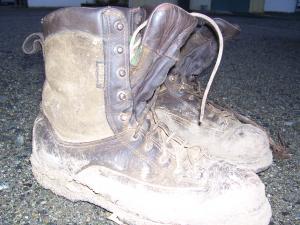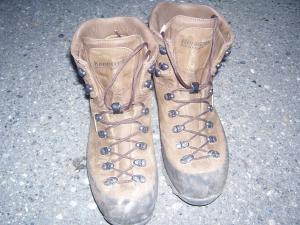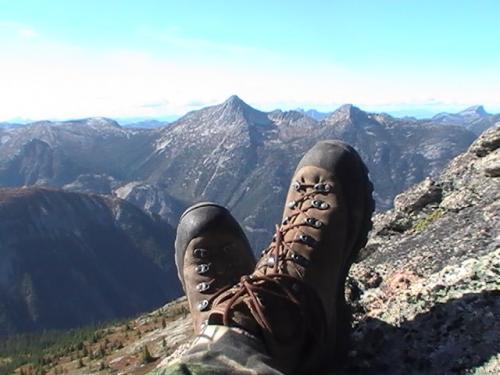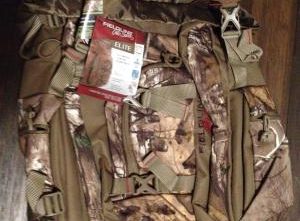Hunting Boots
Hunting Boots
To experience performance and to really the push the limit of your endurance on a hunting expedition, choosing the right personal gear is the most critical. Personal gear like hunting jackets, insulated gloves, boots, pants, base layers are all very important for any hunting trip. Schnees, Danner, Meindl, kenetrek, and Browning are some of the major North American manufacturers of quality hunting boots.
Hunting boot selection will depend on the terrain and the weather on the hunting grounds. Different terrain requires specialized boots designed and styled accordingly. Hunting boots can be broadly categorized into three types: Upland, Multi-Purpose, and High Country boots. Knowing the features of the hunting landscape helps in selecting the right type of boots.
Boot selection tips
Fit
Try boots that fit snugly after having worn a good pair of wool socks, preferably smart wool. You do not want rubbing or slipping to occur inside your boot as blisters will erupt. More layers of socks might be needed depending on the weather and the type of hunt.

Insulation
A well-insulated boot will prevent the loss of heat from the lower extremities and increase the comfort level of the hunter. Different activities require special types of insulation e.g. while hunting a duck or while on a tree stand, heat loss occurs at a far greater pace as there is no activity of the lower limbs and the blood circulation is reduced. Similarly while walking or hiking to stalk or spot a game, blood is continuously being pumped into the legs and hence the need for less insulation.
Insulating factors are always in grams per square meters of the fabric. Generally, three levels of insulation are available.
0 to 200 gram: These boots are for high activity and early season hunting.
400 gram to 800 gram: Hunting boots with this level of insulation are very popular amongst hunters as they help to cover most of the hunting season.
1000 gram and above: Where activity levels are very low and the weather is severe, cold boots with this level of insulation are preferred.

My Danner Frontiers with 400 gram insulation.
Water resistance
Terrain and activity should be carefully analyzed, as exposure to moisture is inevitable while hunting; it could be the early morning dew, which might soak in through the leather or the fabric causing damp and cold feet. A premium waterproof breathable membrane stitched into the lining between the shell and the foot will keep the feet dry and comfortable. Gore Tex is a very effective material for hunting boots, keeping your feet waterproof while allowing proper breathing. If going moose hunting, water proof boots are a must as moose inhabit some real swampy areas.
Design and styles of hunting boots
Having decided the fit, you need to consider insulation, waterproofing, and the intended activity for which the boot is required. Choose the category of the boot.
Upland boots are required to trek long distances for activity like bird watching and hunting. The tread design need not have heavy lugs for traction as they increase the weight. A lighter tread design which can shed soil is preferred. Extra padding on the inside of the boot adds to the comfort level.
Multi-purpose boots
These boots cover most of the hunting activities and are easily available. From lightly insulated ones to multi-layered insulation varieties are available. These boots can handle all types of terrain and surfaces. They are also available in heavy lug designs for greater traction and are tough compared to the upland boots. Most hunters prefer these boots to others.
 High country boots
High country boots
As the terrain gets tougher, higher, and steeper demands on the boot increase. The boot should provide additional support to the hunter. High altitude activities like elk hunting, mule deer hunting, and sheep hunts require these boots.
Hiking boots
These are light and offer far greater mobility during the early season especially when hunting early season elk.
Over boots
These are extremely useful in hunts that do not require activity and can be slipped on. The boots they offer excellent protection in extremely cold conditions.
Rubber boots
When the activity involves wading through shallow rivers, marshes, creeks and swamps rubber boots offer complete waterproofing. Rubber boots are also scent free and resist snakebites. They are mostly made of vulcanized rubber and have woolen insoles for warmth. Rubber boots are great for duck hunting.
Selecting the right kind of hunting boots will make the hunting experience more enjoyable and ensure the hunter does not end up with cold, wet, and sore feet. Make sure you treat your boots with a high quality preservative so they stay waterproof and do not dry up .




